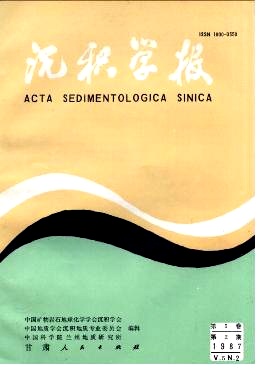MODERN COASTAL STORM DEPOSITS OF PUTUO ISLAND AND ZHUJIAJIAN ISLAND,ZHOUSHAN
- Received Date: 1985-11-30
- Publish Date: 1987-06-10
Abstract: This paper mainly deals with the intense change of hydrodynamics and corresponding sediment accumulation in the modern coast of Zhoushan during Typhoons 8114 and 8310, and discusses the sedimentary characteristics of storm-sand and gravel beaches. These may provide evidences for finding and interpreting similar ancient sedimentary deposits. 1. Common characteristics of the two typhoons ( 1 ) The routes of the two typhoon centers were similar, both approached to the coast of Zhoushan in the direction of NW 315, then at the points of 30.4N 123.5E and 29.8N 124E (near the Zhoushan coast) changed the direction of NE and moved north- eastward. ( 2 ) The wind velocity in the typhoon centers was up to 45-55m/s, the resulting maximum wave height was up to 7.5-17m, the maximum tidal ranged from 4.5 to 5.4m in the nearshore area. This is why the two typhoons exerted the largest effect on the stuied area. 2. Characteristics of storm deposits on sandy coast ( 1 ) The coast underwent an intense erosion and deposition during the typhoon invasion. The measurements before and after the typhoons have shown that the lower part of aeolian dunes and the middle and upper parts of backshore were dominated by accumulation with an increase of elevation about 10-20cm, while the foreshore and the lower part of backshore by erosion. The berms built before the typhoons were eroded 30-50cm, and foreshore reduced 10-20cm. ( 2 ) Sediments formed under fine weather conditions were extensively reworked or even destroyed by typhoon-induced storm waves,and partially or wholly replaced by storm deposits. The characteristics of storm deposits are as follows: (i) sediments become coaser. The mean grain size changes from 2.20-1.50φ before the onset of the typhoons to 1.97-1.00φ during the typhoons: (ii) sediment sorting becomes poorer.The values of standard deviation increase from 0,37-0.40 before the typhoons to 0.45-0.60 during the typhoons; (iii) The sedimentary structure assemblage characterized by hammocky crossbeddings is upwards composed of scour- filled beddings, parallel beddings, hamtnocky and swash cross-beddings and climbing beddings; (iv) the storm deposits in this area are different from the shallow-sea storm deposits whose mean grain size is coaser.in sedimentary sequences appears amalgation without graded beddings and the association with turbidite, remains of organism are mainly nearshore benthonic fauna with strong bioturbation structure. 3. Characteristics of storm deposits on the gravel coast Our observasion has shown that most of gravel beaches in this area are the results of typhoon-induced storm waves. Under fine weather conditions, the top of the ridge has an elevation of 2-4m, and only the middle and lower parts of its sea side are modified and reworked by waves, tides and currents; under storm weather conditions, water may reach or even swash over the top of the ridge, and brings lots of pebbles to the top of the ridge.The characteristics of storm gravel beaches are as follows: (1) Gravel beaches are dominatea by large disc-shaped and flat pebbles, which are mainly distributed at the top of the ridge. Therefore, they can act as an indicator of beaches, espacially beaches formed by storm waves; (2) The shaping and sorting have a marked zonation, from the top of the ridge to sea appaer large disc zone, imbricate zone, infield frame zone, spherical rod and outer frame zone. However, this kind of zonation is evident only in the environments that sorting and reworking are relatively active, with highstorm energy. It should be pointed out that gravel beaches are generally the results of the high energy hydrodynamics, and normal gravel beaches, if exist, only the results of reworking of storm gravel beaches. 4. The study purpose of modern storm deposits is to find out more ancient storm ones. With marks and vertical sequences of storm deposits, we have found similar sequences of storm deposits, respectively in the Silurian and Triassic strata in the Chaohu area of Anhui Province.For example,the Fcnto group of Middle Silu
| Citation: | Zhang Guodong, Wang Yiyou, Zhu Jingchang, Yan Jianping. MODERN COASTAL STORM DEPOSITS OF PUTUO ISLAND AND ZHUJIAJIAN ISLAND,ZHOUSHAN[J]. Acta Sedimentologica Sinica, 1987, 5(2): 16-28. |






 DownLoad:
DownLoad: